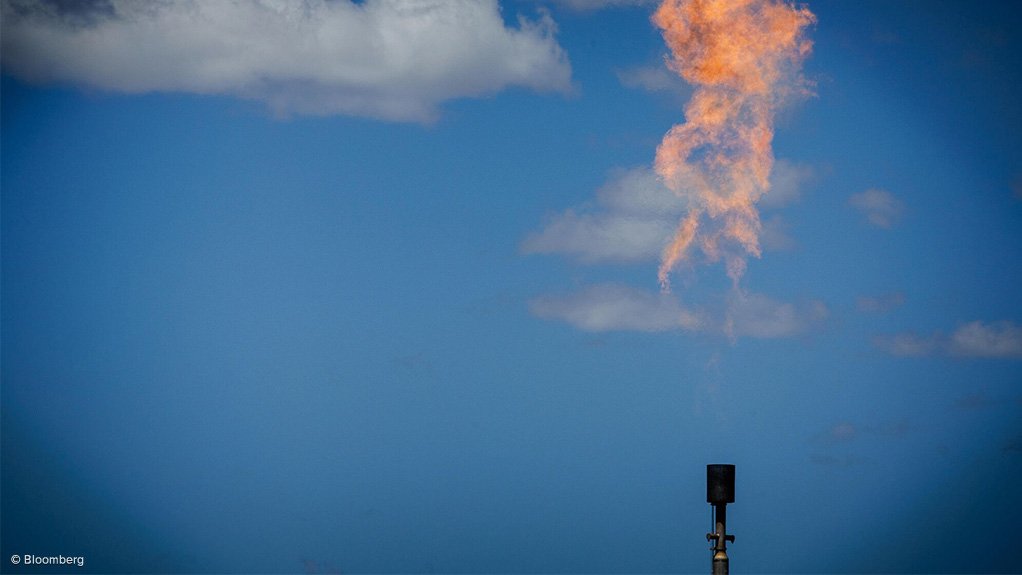Energy industry’s methane emissions near record despite pledges
Global methane emissions from fossil fuels held near a record high last year, the International Energy Agency (IEA) said in its annual 'Methane Tracker' report, renewing concerns that governments and industry aren’t doing enough to stem releases of the devastating greenhouse gas.
While the analysis highlighted progress in some places, on the whole it suggests global oil, gas and coal producers and governments are falling short of promises to cut methane emissions, directly jeopardizing global efforts to limit climate change. The fossil fuel industry must cut methane emissions 75% by 2030, the IEA said, in order to be on pace for net zero emissions in 2050, which aligns with the goals of the Paris Agreement.
Cumulative methane emissions from the energy sector remained near a 2019 record, though fossil fuel output is higher. The report stressed how methane releases from coal, oil and gas operations can be curbed through changes in operator behavior, equipment upgrades and capture technology. Those interventions would require an estimated $170-billion in investment by the end of the decade, or roughly 5% of the industry’s 2023 income.
“If we can't make real progress on cutting down on methane it’s going to be impossible to limit warming to 1.5 °C,” said Christophe McGlade, head of the IEA’s energy supply unit and lead author of the report. “While emissions are still high, in our view 2024 is going to be a watershed moment for action and transparency.”
Momentum to curb methane is growing and commitments to do so have increased even if they have yet to translate into significant cuts. Exxon Mobil Corp. and Saudi Arabia’s Aramco, the world’s largest private and state-sector oil companies, led a pledge by 50 oil and gas producers at the COP28 climate summit to reduce emissions from their own operations and stem releases of methane to near zero by 2030, though they didn’t agree to cut production at all.
Oil, gas and coal operators have never had more tools or incentives available to help curb their emissions, McGlade said, citing the work of the United Nations’ International Methane Emissions Observatory and growing opportunities snuff out leaks quickly. Large methane releases — the kind typically associated with big leaks — grew 50% last year, “a worrying trend,” according to the IEA report.
“It's very often the case that once a leak is detected, once we know that it's occurring, it can be quite quick and quite easy to stop,” he said. “Sometimes someone's left a latch open on a tank, sometimes it's a flare that's gone out and once they are aware that this is happening they can stop it.”
However, the impact of IMEO’s notification system has been limited in part because some countries and operators won’t provide data about locations and types of fossil fuel assets, making it difficult for scientists attribute the emissions or know who to contact
Not all releases are easy to halt and some of the emissions observed by satellites are planned or come from known hotspots where operators appear unable or unwilling to reduce their emissions. The IEA estimated that fossil fuels generated 120-million metric tons of methane last year and that large leaks contributed about five-million tons, including a massive release from a natural gas well blowout in Kazakhstan that took more than 200 days for the operator to quash.
Article Enquiry
Email Article
Save Article
Feedback
To advertise email advertising@creamermedia.co.za or click here
Press Office
Announcements
What's On
Subscribe to improve your user experience...
Option 1 (equivalent of R125 a month):
Receive a weekly copy of Creamer Media's Engineering News & Mining Weekly magazine
(print copy for those in South Africa and e-magazine for those outside of South Africa)
Receive daily email newsletters
Access to full search results
Access archive of magazine back copies
Access to Projects in Progress
Access to ONE Research Report of your choice in PDF format
Option 2 (equivalent of R375 a month):
All benefits from Option 1
PLUS
Access to Creamer Media's Research Channel Africa for ALL Research Reports, in PDF format, on various industrial and mining sectors
including Electricity; Water; Energy Transition; Hydrogen; Roads, Rail and Ports; Coal; Gold; Platinum; Battery Metals; etc.
Already a subscriber?
Forgotten your password?
Receive weekly copy of Creamer Media's Engineering News & Mining Weekly magazine (print copy for those in South Africa and e-magazine for those outside of South Africa)
➕
Recieve daily email newsletters
➕
Access to full search results
➕
Access archive of magazine back copies
➕
Access to Projects in Progress
➕
Access to ONE Research Report of your choice in PDF format
RESEARCH CHANNEL AFRICA
R4500 (equivalent of R375 a month)
SUBSCRIBEAll benefits from Option 1
➕
Access to Creamer Media's Research Channel Africa for ALL Research Reports on various industrial and mining sectors, in PDF format, including on:
Electricity
➕
Water
➕
Energy Transition
➕
Hydrogen
➕
Roads, Rail and Ports
➕
Coal
➕
Gold
➕
Platinum
➕
Battery Metals
➕
etc.
Receive all benefits from Option 1 or Option 2 delivered to numerous people at your company
➕
Multiple User names and Passwords for simultaneous log-ins
➕
Intranet integration access to all in your organisation




















